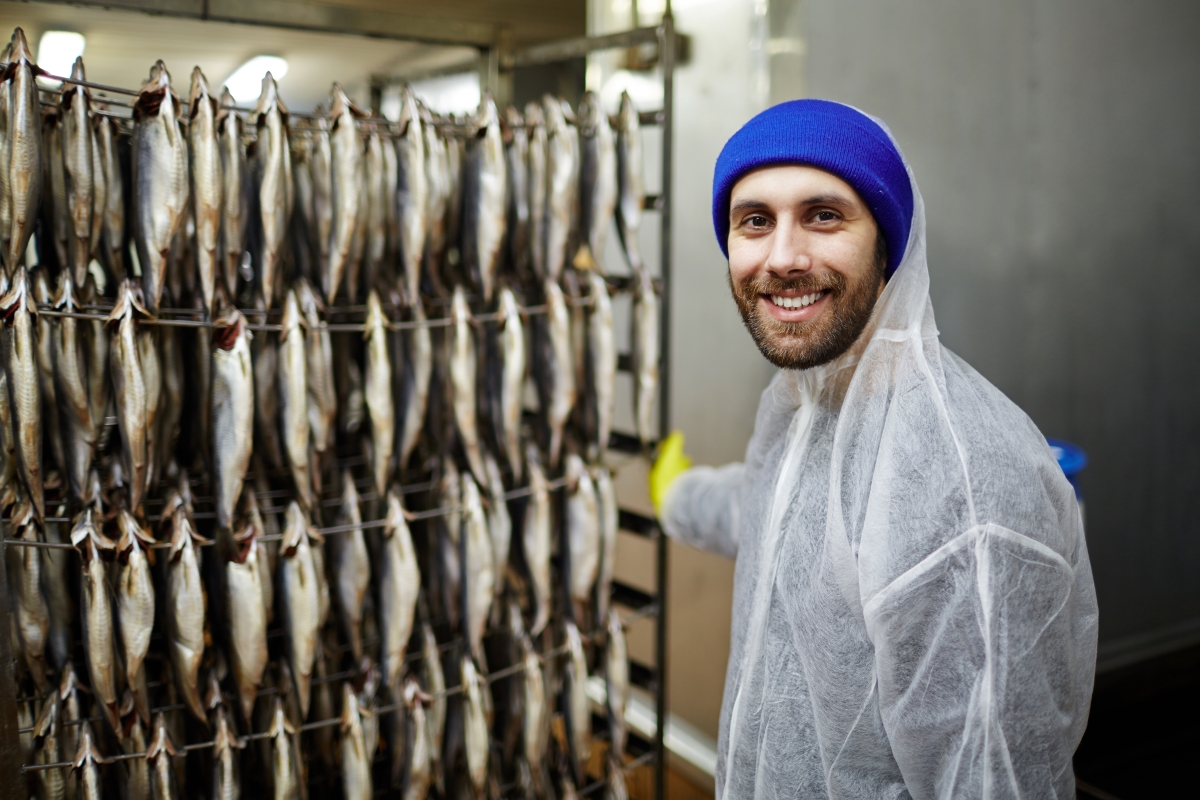Career Overview
This group includes fish and seafood plant machine operators who set up and operate machinery to process and package fish and seafood products, and fish and seafood plant cutters and cleaners who cut, trim and clean fish or seafood by hand. These workers:
- Work in fish and seafood processing plants
Job Titles
Duties
Fish plant machine operators:
- Set up and operate machines to clean, cut, cook, smoke, brine, dehydrate or otherwise process fish products
- Set up and operate machines to can, bag, box or otherwise package fish products
- Check products and packaging for defects and compliance to company standards
- Adjust machine as needed
- Record production information such as quantity, weight, date and type of products packaged
Fish plant cutters and cleaners:
- Cut, clean and trim fish prior to marketing or further processing
- Scrape away scales, cut fish, separate fillets and remove scrap parts using knife
- Check fish fillets to decide the best number and size of fillet sections
- Cut sections accordingly and place in container for weighing
- Disjoint and remove meat from lobsters or other shellfish in preparation for canning or further processing
Earnings
Earnings is income that workers receive in exchange for their labour. Depending on the type of employment, earnings can be in the form of wages (hourly), salaries (fixed monthly or annual) or self-employed earnings.
Work Environment
# Workers Employed
755% Employed Full Time
42%Key aspects of the work in this occupation:
- Work takes place in a regular controlled indoor environment
- Workers may be exposed to infectious bacteria and viruses when handling fish and shellfish
- Working with equipment, instruments, machinery or power/hand tools can be a source of injury
- The workplace may be noisy enough to cause distraction or hearing loss
- Workers may be exposed to strong or toxic odours
- Work involves contact with water
Career Pathways
Progression to supervisory positions is possible with experience.
Related Careers
Occupational Interests
It’s important to understand what kinds of occupations align with your interests.
For more about occupational interests visit Skills for the Future Workforce > Characteristics.
Here are the top occupational interest(s) for this career profile:
Education, Training and Skills
- Some secondary school education may be required
- On-the-job training is required
Education programs in B.C.
The following program areas are related to this occupation:
- Academic/Basic Upgrading

Skills
Every job calls for a certain set of skills. Knowing those skills is the first step in finding a good career fit.
Here, you will find the 10 most relevant workplace skills. Some are more important to achieving success in a certain career than others. These skills may come naturally to you or you may need to gain them through education, training and experience.
See the list of work-related skills below, ranked in order of importance for this career. Check out the list and see if this career matches your skills—take that first step!
Keeping track of and assessing your performance, other individuals, or organizations to make improvements or take corrective action.
Giving full attention to what other people are saying, taking time to understand the points being made, asking questions as appropriate, and not interrupting at inappropriate times.
Using logic and reasoning to identify the strengths and weaknesses of alternative solutions, conclusions or approaches to problems.
Talking to others to share information effectively.
Adjusting actions in relation to others' actions.
Understanding written sentences and paragraphs in work-related documents.
Being aware of others’ reactions and understanding why they react as they do.
Considering the relative costs and benefits of potential actions to choose the most appropriate one.
Managing one’s own time and the time of others.
Watching gauges, dials or other indicators to make sure that a machine is working properly.
Labour Market Statistics
Discover data, facts and information that have been gathered and analyzed. Learn about the characteristics of the economy and labour market in B.C.
Employment
Find out about employment types and trends by region and industry.
Employment
755Employment by Region







| Region | Employment | % Employment of this Occupation |
|---|---|---|
| Cariboo | 0 | 0.0% |
| Kootenay | 0 | 0.0% |
| Mainland/Southwest | 450 | 59.6% |
| North Coast and Nechako | 25 | 3.3% |
| Northeast | 0 | 0.0% |
| Thompson-Okanagan | 10 | 1.3% |
| Vancouver Island/Coast | 260 | 34.4% |
Labour Market Outlook
The B.C. Labour Market Outlook is a 10-year forecast of the expected supply and demand for labour in the province. It’s usually updated every year. The purpose is to provide British Columbians with the knowledge to make informed decisions on careers, skills training, education and hiring.
Forecasted Job Openings (2024-2034)
510Forecasted Job Openings
Forecasted Employment Growth Rate
Composition of Job Openings
Job Openings by Region (2024-2034)







| Region | Job Openings | Avg. Annual Employment Growth |
|---|---|---|
| Cariboo | Not available | Not available |
| Kootenay | Not available | Not available |
| Mainland/Southwest | 380 | 2.3% |
| North Coast and Nechako | 10 | -0.8% |
| Northeast | Not available | Not available |
| Thompson-Okanagan | Not available | Not available |
| Vancouver Island/Coast | 120 | 0.7% |
Industry Highlights
Learn about the opportunities in B.C.'s major industries, including employment trends, earning potential, locations of work and more.
Forecasted Job Openings by Industry
| Industry | Job Openings (2024-2034) |
|---|---|
| Manufacturing | 400 |
| Agriculture and Fishing | 70 |
| Wholesale Trade | 40 |
Resources
Resource information is currently not available.








